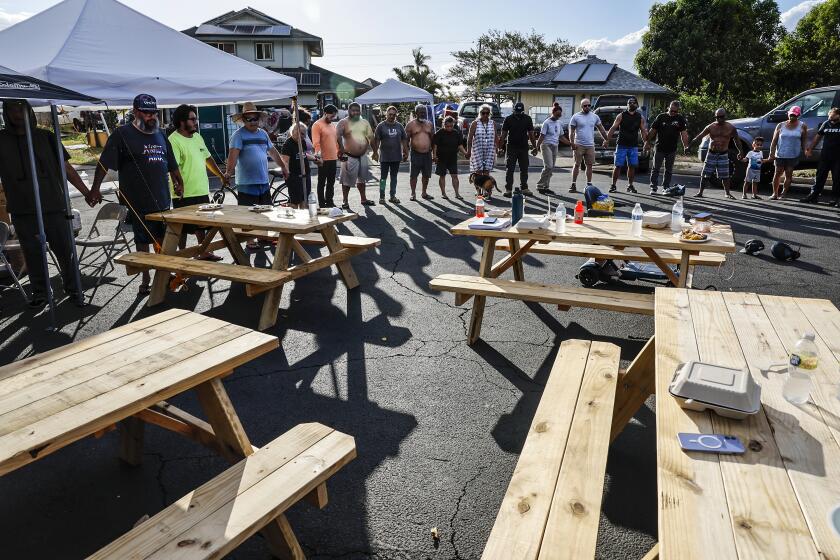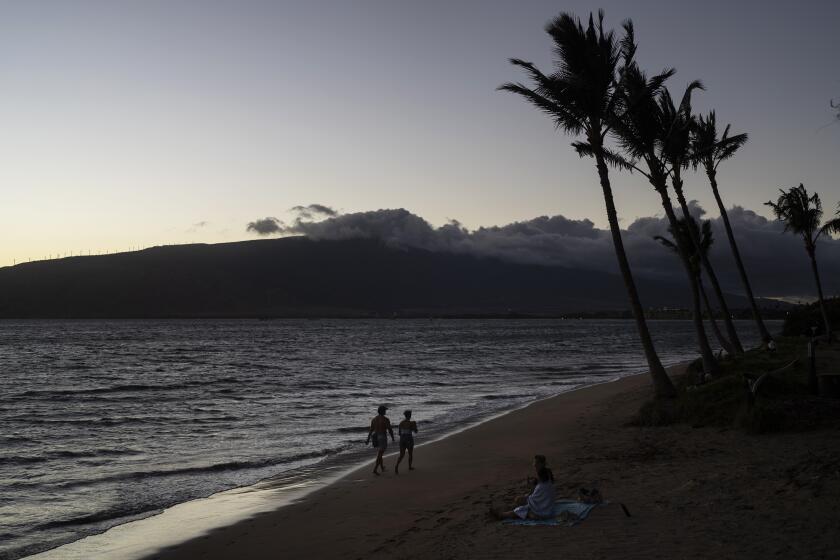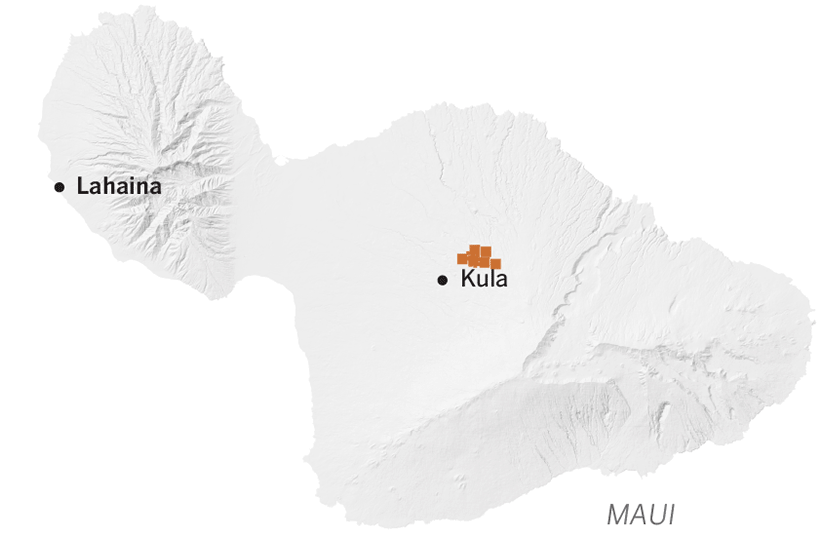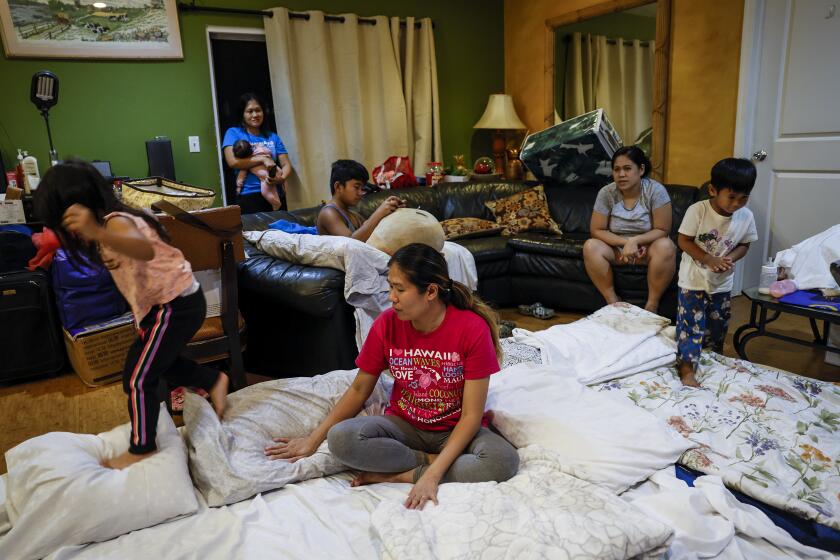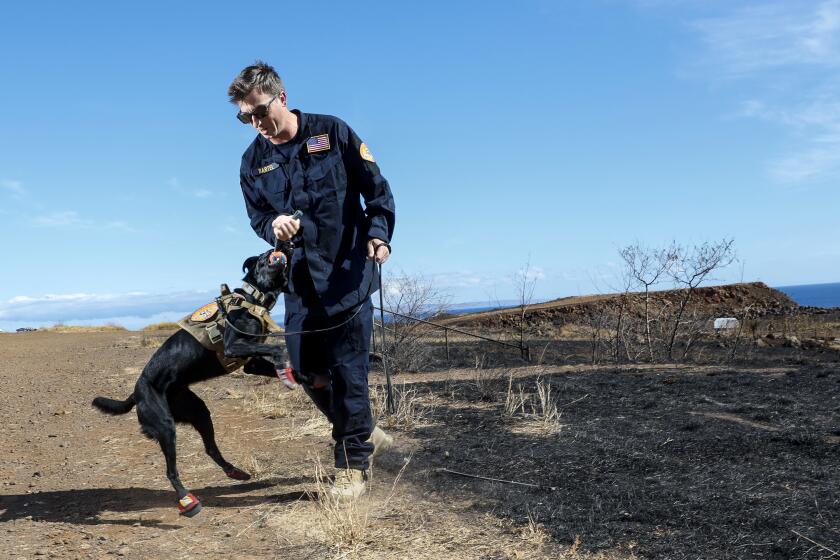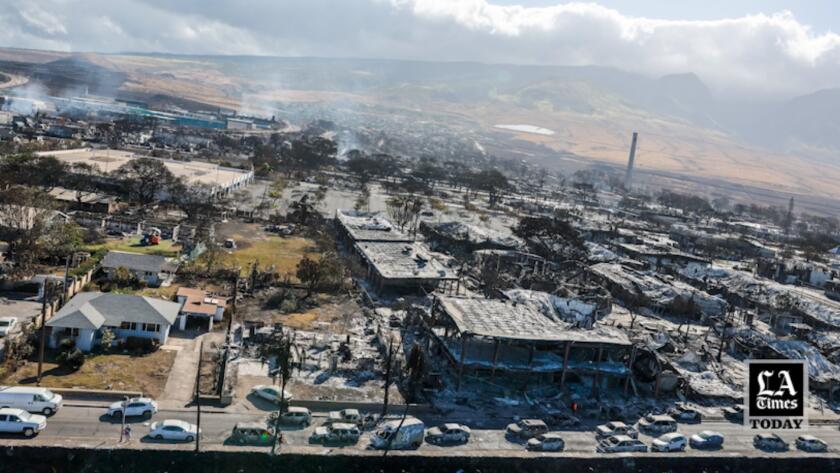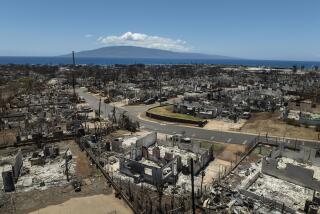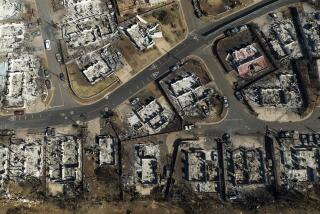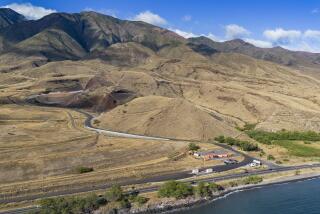Maui residents consider the unthinkable: Las Vegas, the ‘ninth island’
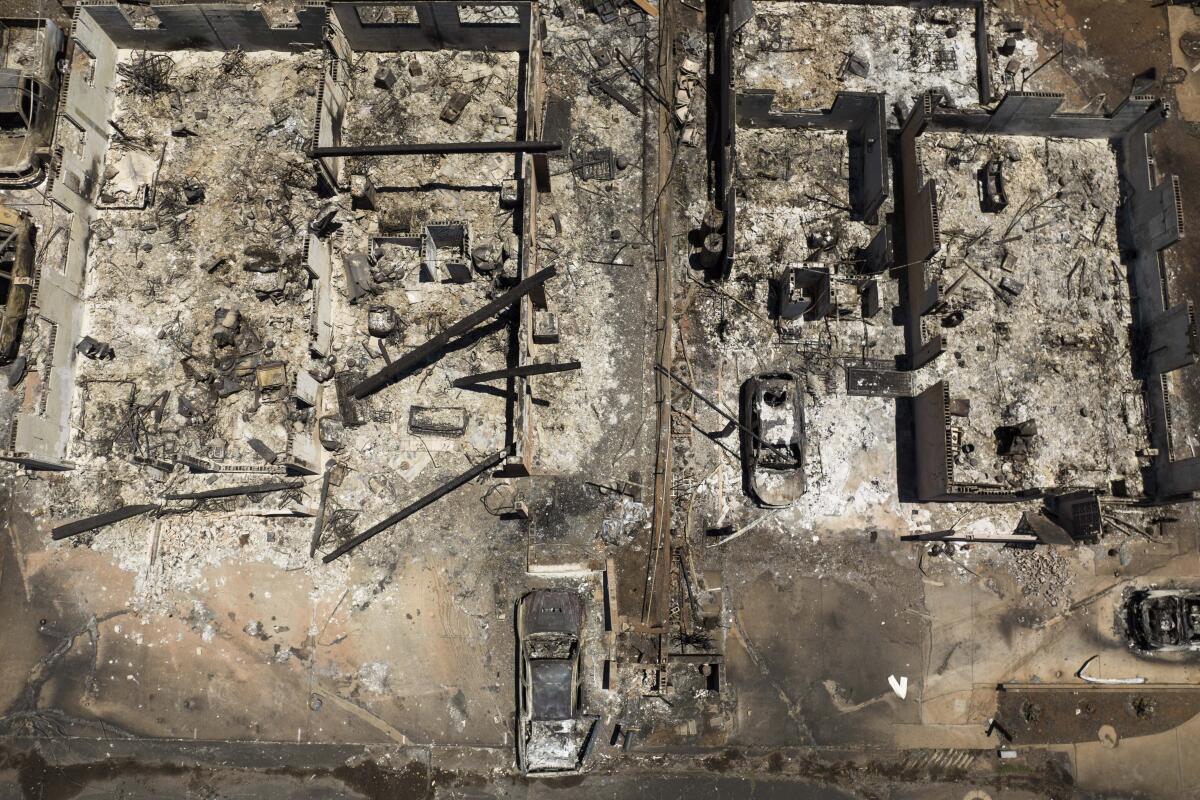
Since the Lahaina fire incinerated her apartment, Tatiana Kamelamela-Liua has been at a crossroads.
A lifelong inhabitant of the islands who is of Native Hawaiian and Pacific Islander heritage, she knows no home but Hawaii and feels close to “the aloha of the community that you can’t find anywhere else.”
But she’s afraid that the tourism that sustains her family won’t return and that after thousands of homes were lost in the deadly fire on Maui, they won’t find an affordable place to live.
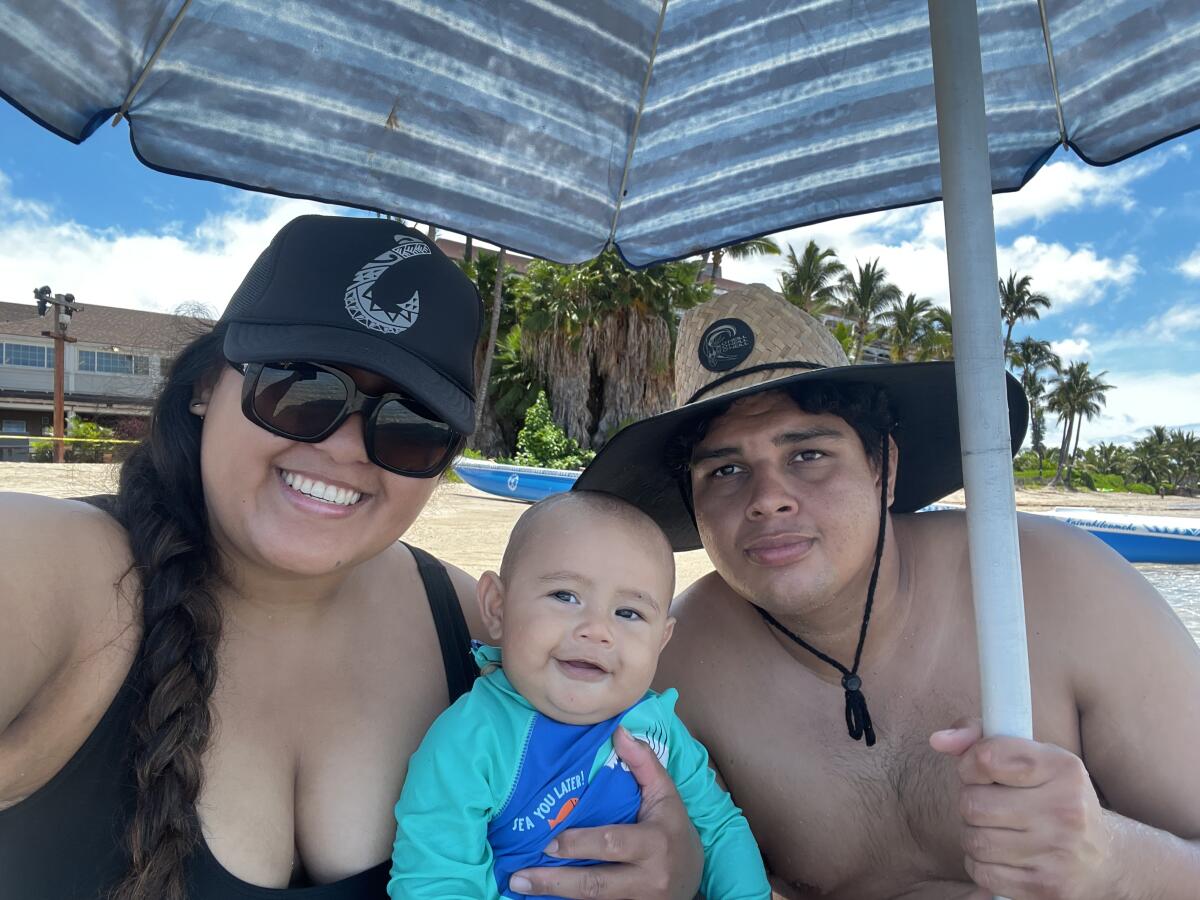
That’s what led Kamelamela-Liua, 26, to broach a previously unthinkable question.
“I asked my husband if we should move to Vegas,” she said, suggesting the couple and their toddler could create a new life in the desert city affectionately called “the ninth island” for its large population of Hawaiians and former Hawaii residents.
“We have family there,” Kamelamela-Liua said. “It’s cheaper. And they have a ton of hotels to work in.”
As Maui hotel rooms sit empty after the deadly Hawaii wildfire that devastated Lahaina, some are sounding economic alarms, asking tourists to return.
The allure of the mainland has long won over people from the state with the nation’s highest cost of living. Now, experts fear the fire and the redevelopment that follows could speed up gentrification of Maui and the outward migration, in particular for Native Hawaiians, a group that includes many of the state’s poorest.
In Lahaina, where 12% of all people lived below the poverty line and 1 out of 10 inhabitants were Native Hawaiian and other Pacific Islanders, many evacuees have already left for the mainland or are considering it, according to interviews with survivors, social welfare experts and economists and remarks by government officials.
Others are waiting to decide, hoping that tourism — Maui’s dominant industry that’s now at a fraction of its pre-fire levels — will bounce back. The island accounts for 31% of visitors to Hawaii, where nearly a fifth of all tourism workers are Native Hawaiian, according to state government data. According to the Maui Economic Development Board, tourism is responsible for about 70% of all money generated in Maui County.
Hawaii and Maui leaders urge tourists to act with empathy when visiting the popular island as people mourn after deadly fires. Here’s what you should know.
“It would be potentially catastrophic if no one traveled to the island,” Hawaii Gov. Josh Green said during a recent news conference. “We would probably see a mass exodus from Maui.”
About half of the island’s hotel rooms are sitting empty, even with evacuees and emergency personnel staying in many.
The trends are clear to Kamelamela-Liua at the Hyatt Residence Club in Kaanapali, where the former Ritz-Carlton employee is staying with her hotel restaurant-worker husband and young son in one of several rooms offered to evacuees for 30 days. She would rather continue to live on the island after her time is up. But Kamelamela-Liua isn’t sure the family can keep up with housing costs.
The Lahaina fire in West Maui ignited as firefighters focused on the Upcountry fire. What happened next — the deadliest U.S. wildfire in more than a century — left the historic town in ashes.
Before the fire, the median monthly rent in Lahaina for a two-bedroom apartment was $171 above the $1,450 she paid at the low-income housing development of Lahaina Surf. She is also considering whether to resettle on Oahu, where she grew up and has family, but rents are high there too. In Clark County, Nev., where Las Vegas is located, the median rent for a two-bedroom is about $1,166. And there is no state income tax.
“We know people who have made the move before, and there are definitely people doing it now,” said Kamelamela-Liua, who plans to return to the hotel industry when her child is older. For now, she’s launched a GoFundMe for a potential move.
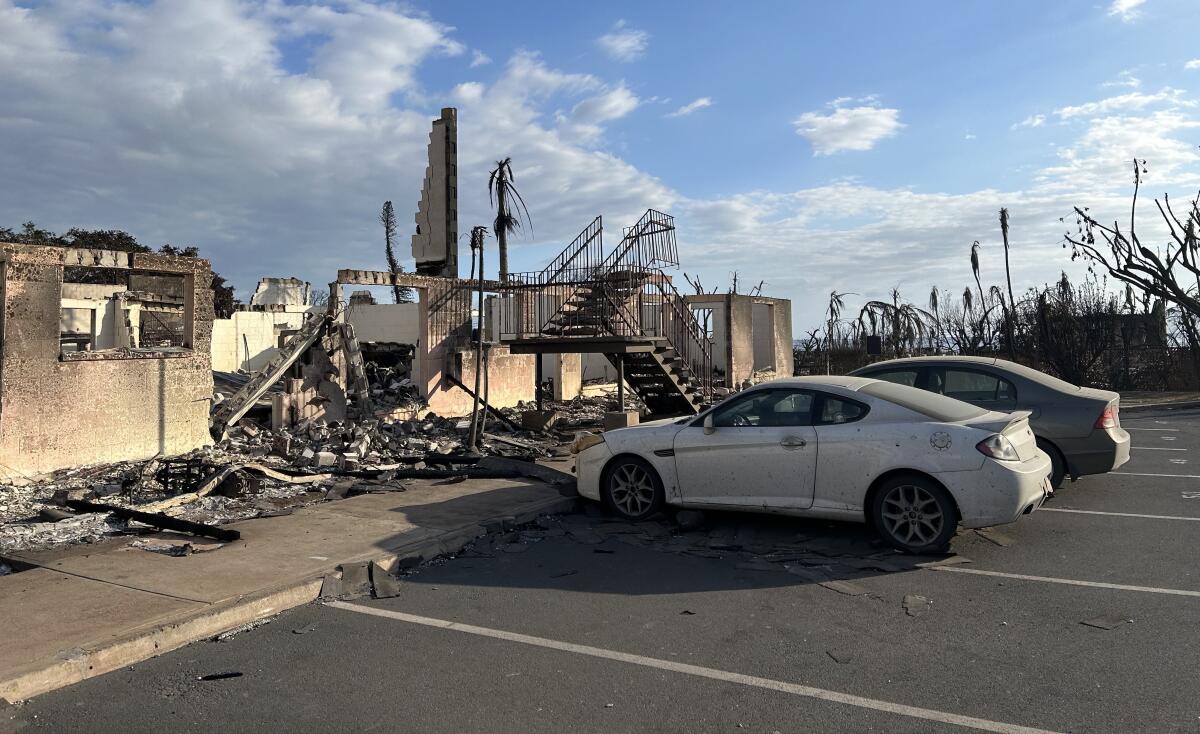
If the fear of an exodus from Maui is realized, it would worsen an ongoing trend. According to census data, Hawaii was among the 10 states to lose the largest share of people between April 2020 and July 2022. Last year, on average, 26 more people moved away per day from Hawaii than moved in, according to the census.
The departures were fueled by the lingering effects of the early stages of the pandemic, when high unemployment, decimated tourism and rising prices created a worst-case scenario.
With 3 in 10 residents out of work during 2020’s tourism slowdown, Maui County had one of the worst jobless rates in the country and one that remained stubbornly high for longer than on the mainland. The number of visitors to Hawaii, which surpassed 10 million in 2019, still has not returned to pre-pandemic levels.
And as COVID-19 brought an influx of wealthy remote workers looking for a paradisial escape, Hawaii’s already high housing prices rose by 35% from 2019 to 2022, the University of Hawaii Economic Research Organization found.
“Hawaii doesn’t build enough housing and the housing costs way too much compared to what people here make,” said Justin Tyndall, an assistant professor of economics at the university who is co-author of the research. “That has been an issue since before Lahaina. But this is now going to make things worse. For many people, there will be no option but to leave.”
Tyndall predicted that Native Hawaiians could be hit harder because they tend to have lower incomes and play an outsize role in the tourism industry. Well over a third of Native Hawaiians in the state work in jobs connected to tourism. Many already have strong diaspora communities built up over generations across the U.S. West.
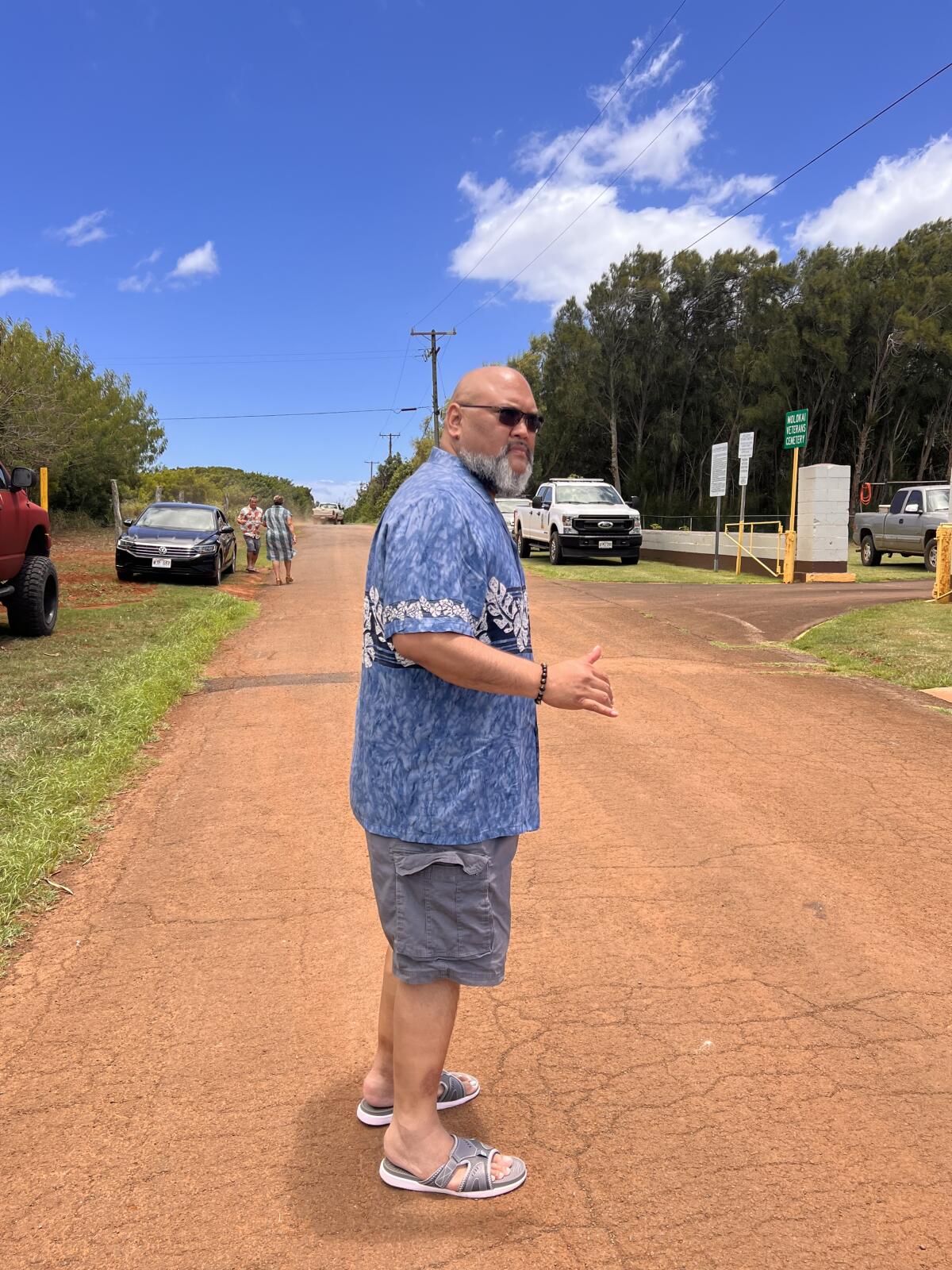
Today, fewer than half of the 680,000 people in the U.S. who identify as Native Hawaiian alone or in combination with another race live in Hawaii, according to the census. So many live on the western mainland that the Council for Native Hawaiian Advancement this year held its first regional convention in Las Vegas. In addition to Nevada, another top destination for those who move from Hawaii — Native or not — is California.
“Don’t get me wrong, Hawaii is paradise. You miss the ocean. You miss the food. The mainland has its pretty parts, sure, but it is nothing like Hawaii,” said Emory Nihipali, who runs “Little Grass Shack,” a weekly Hawaiian music show on KUNV 91.5 FM in Las Vegas that he launched 24 years ago.
“But in exchange for dealing with the heat and everything else, there is just more on the mainland,” said Nihipali, 52, who spent part of his childhood on Oahu, Molokai and the Big Island and is of Hawaiian, Japanese, Chinese and Irish heritage. “We Hawaiians have big families, so even the grocery store trips are cheaper. Things add up and I think that’s why you see more and more people moving in, not just to Vegas but everywhere. You have to work three or four jobs in some parts of Hawaii to make it. On the mainland, you can actually buy a home. A house.”
Jowel and Relyn Delfin have taken 13 relatives into their central Maui home.
In Lahaina, the median gross rent — for homes with any number of bedrooms — increased at nearly double the rate of the nation as a whole between 2015 and 2021, according to the census. The median 2021 gross rent in Lahaina was about the same as in California, just shy of $1,700.
As housing prices rose, so did poverty.
The number of people in Hawaii who lived in poverty grew from 9% in 2018 to 15% four years later, according to an analysis by Aloha United Way. The organization found Native Hawaiians had the highest rate of poverty at 27%. And it said that nearly half the state’s population was above official poverty levels but could not make basic ends meet.
“The pandemic absolutely drove more people into poverty that they’ve a hard time getting out of,” said Suzanne Skjold, the Honolulu-based chief operating officer of Aloha United Way. “The pressures were already hard on families in Hawaii, many who were living paycheck to paycheck, and our fear is that it will be very hard to stay [on Maui] and rebuild for many families.”

Those are concerns shared by Sebastian Martinez, a 25-year-old restaurant worker who has booked a one-way ticket to the mainland for Friday after escaping the fire that destroyed his Lahaina apartment.
“There are no jobs here, no tourism here,” said Martinez, who is fundraising online to cover his initial payments on a rental in Las Vegas.
“I grew up in Lahaina. I never planned to leave. But my restaurant is closed and I feel like I have no choice but to go while I can,” said Martinez, the son of a Mexican immigrant who came to Maui 30 years ago to work as a chef. He plans to move on his own to secure a job before flying his father, girlfriend and child over.
Human searchers have little chance of detecting the tiny fragments that remain of wildfire victims in the ashes of Lahaina. Hope rests with trained cadaver dogs.
Not everyone is set yet on leaving.
Since losing the Lahaina apartment he had rented with his girlfriend, musician and fishing store co-owner Sterling Seaton has stayed with his parents in Wailuku, on the other side of the island.
The fire didn’t reach his shop, a few miles north of his apartment. But he’s concerned about whether his customers, half of them tourists, will flock back. His girlfriend, who works on cruise ships and runs a photography business, is also starting anew after the fire destroyed her cameras.

“My girlfriend and I have talked at length about possibly moving, well before the disaster, to the mainland just for more opportunities. Like being able to not stress so much with day-to-day expenses,” said Seaton, 35, who has considered going to California or Washington state, where he has relatives. “So this might be the time to transition.”
For Camille DeRego, a resident of the Honokowai area, a few miles north of Lahaina, the decision is to stay and help in the rebuilding.
The fire left her without her main job as a luau host and traditional Hawaiian dancer in Lahaina, though the condo she shares with her husband was far from the burn zone. She still has her second job at the Marriott, where she is a concierge for resort properties.
“All my friends lost their homes and 90% of my co-workers did,” said DeRego, whose workplace of 15 years — the Feast at Lele luau on Front Street — no longer exists. A Native Hawaiian who grew up in Wailuku, DeRego, 35, said she was already worried about overdevelopment on the island and in Lahaina before the fire. Now, she’s concerned the area will change even faster.
“It wasn’t just the costs going up but the character of our home. The development of the land over my lifetime has become unsustainable, and we are using up our natural resources. We have areas that used to be forest that are now barren,” DeRego said. “So, it’s not surprising that I hear of people who are thinking of packing up.”
Kamelamela-Liua is torn about whether to stay.
“Taking it day by day,” she said. She’s not only worried about job prospects on Maui but also environmental dangers. “We don’t want our child to grow up somewhere where a fire like this could happen again. But Hawaii is also our home. We want him to know his home, not a faraway place that’s dry and landlocked and feels nothing like home.”
Still, she said, moving across the Pacific “does look appealing.”
Times staff writer Christopher Reynolds contributed to this report.
Watch L.A. Times Today at 7 p.m. on Spectrum News 1 on Channel 1 or live stream on the Spectrum News App. Palos Verdes Peninsula and Orange County viewers can watch on Cox Systems on channel 99.
More to Read
Sign up for Essential California
The most important California stories and recommendations in your inbox every morning.
You may occasionally receive promotional content from the Los Angeles Times.
